Introduction
Multi-cloud – the practice of using multiple cloud providers and platforms for different workloads – is quickly becoming a cornerstone of modern enterprise IT strategy. Instead of relying on a single cloud vendor, businesses are distributing their applications and services across a mix of public and private clouds to best meet specific requirements.
This approach is no longer a niche consideration; it’s essential for organizations aiming to achieve greater agility and resilience. In fact, industry research shows that multi-cloud adoption is soaring – Gartner reports that over 75% of organizations use multiple public cloud services, and another survey found 87% of enterprises already have a multi-cloud strategy in place. This growing trend underlines the strategic importance of multi-cloud: it empowers businesses to leverage the strengths of different cloud providers while mitigating the risks of an all-eggs-in-one-basket approach.
Why is multi-cloud becoming so critical for businesses, especially for those leading digital transformation initiatives? For one, it provides flexibility and choice. No single cloud provider excels at everything; each offers unique services, pricing, and geographic coverage. By adopting a multi-cloud strategy, companies can choose the optimal environment for each workload, aligning with both technical needs and business goals.
Moreover, multi-cloud strategies give enterprises leverage – avoiding over-reliance on any one vendor – which can drive better pricing and service terms. As cloud computing matures, advanced professionals recognize that mastering multi-cloud is key to future-proofing their infrastructure and cloud strategy.
In the sections below, we’ll dive into the benefits and challenges of multi-cloud architectures, explore the tools that make multi-cloud management possible, and discuss how professionals can upskill to navigate this multi-cloud future effectively.
Benefits of Multi-Cloud Architectures
Adopting a multi-cloud architecture offers several compelling benefits for enterprises. Below we highlight the key advantages and why they matter for advanced cloud strategies:
✅ Avoiding Vendor Lock-In
One of the most cited benefits of multi-cloud is the ability to prevent vendor lock-in. Relying on a single cloud provider can constrain your flexibility and negotiating power. Multi-cloud architectures let organizations diversify their cloud portfolio, ensuring they’re not trapped if a provider raises prices or lags in innovation. Businesses can mix and match services and leverage the best offerings from each cloud vendor rather than being limited to one ecosystem. This not only hedges against strategic risks, but also gives teams access to a broader range of cutting-edge technologies across providers.
✅ Enhanced Redundancy and Reliability
Running workloads on multiple clouds dramatically improves an organization’s redundancy and uptime. By distributing applications and data across different cloud platforms, you eliminate single points of failure. If one provider experiences an outage or disruption, your services can failover to another cloud and continue running with minimal impact. This robust failover capability is a cloud computing best practice for disaster recovery and high availability. Multi-cloud setups inherently support a more resilient architecture – if one cloud goes down, it doesn’t disrupt all of your workloads. For senior IT leaders, this reliability is a major strategic advantage, especially for mission-critical applications that demand near-zero downtime.
✅ Optimized Performance and Compliance
No two cloud providers are the same in terms of performance characteristics and geographic coverage. A multi-cloud approach allows enterprises to optimize workload performance by deploying resources in the most suitable environments.
For example, you might run latency-sensitive services in the cloud region closest to your end-users, or choose a specific provider known for its high-performance database service for that part of your application.
At the same time, multi-cloud helps address compliance and data sovereignty requirements. Organizations in regulated industries can host sensitive data or workloads on a cloud that meets specific regional or industry compliance standards while using other clouds for less regulated tasks.
In practice, this could mean storing EU customer data in a European data center of one provider to satisfy GDPR, while using another cloud for global services. Multi-cloud enables storing sensitive data in specific regions to meet local laws and regulations – giving enterprises the flexibility to remain compliant across jurisdictions. In short, companies can tailor placement of workloads to achieve the best performance and adhere to all compliance mandates.
✅ Cost Efficiency and Flexibility
Utilizing multiple cloud platforms can also lead to significant cost benefits. Each provider has different pricing models and discounts; a multi-cloud strategy lets you take advantage of the most cost-effective services for each component of your infrastructure. By comparing prices and capabilities, organizations can avoid overpaying for a service that another cloud might offer more cheaply or efficiently.
A multicloud strategy can reduce costs and optimize performance simultaneously. For example, you might use one cloud’s inexpensive object storage for backups, but another cloud’s fast compute instances for a high-performance application – optimizing spend for each use case. Additionally, multi-cloud gives you the flexibility to scale resources on the most appropriate (and economical) platform as needs change. This prevents getting stuck with a provider’s pricing increases or limitations. Many enterprises also find that spreading workloads across clouds allows them to better control and allocate costs, and even negotiate better rates by showing a willingness to move workloads elsewhere.
In essence, multi-cloud architectures introduce a healthy competition among your cloud vendors, often leading to more cost-efficient cloud computing overall.
Challenges of Multi-Cloud
While multi-cloud brings many benefits, it also comes with a unique set of challenges. Advanced cloud professionals must be mindful of these complexities to successfully implement a multi-cloud strategy. Key challenges include:
📌 Management Complexity
Orchestrating and managing resources across multiple cloud environments is inherently more complex than working in a single-cloud silo. Each cloud provider has its own interfaces, services, and quirks – requiring expertise in multiple platforms.
Engineers and IT teams need to handle the integration of diverse systems and ensure they all work together seamlessly. This complexity is not trivial: 80% of enterprises report being challenged with multi-cloud management. From configuring networks that span different clouds to synchronizing deployments and updates, the operational overhead can escalate quickly.
Without proper tools and automation (which we’ll discuss shortly), administrators may struggle with inconsistent configurations or duplicated efforts in each environment.
Governance also becomes harder – maintaining uniform policies, tagging, and access controls across clouds requires careful planning. Senior leaders must acknowledge that multi-cloud success demands skilled talent and thoughtful architecture to tame the added complexity.
📌 Security and Compliance Concerns
A multi-cloud footprint widens the attack surface and complicates the security picture. Each cloud platform has its own security model, identity management system, and compliance controls, making it challenging to enforce a consistent security posture. Ensuring data is protected and compliant across different environments is a top concern for organizations.
For instance, you must manage multiple sets of credentials, IAM policies, encryption keys, and monitoring systems. This fragmentation can lead to gaps or misconfigurations if not handled diligently – it’s easy to overlook a setting in one cloud that could expose data. Indeed, with each provider’s distinct security frameworks, maintaining unified security policies across clouds is difficult, and 72% of enterprises struggle with compliance in multi-cloud environments.
Companies must navigate varying regulatory requirements (e.g., GDPR, HIPAA, PCI) on each platform and ensure that data moving between clouds remains compliant. Advanced security practices like centralized identity federation, single sign-on, and zero-trust models become crucial in multi-cloud to manage access and protect assets consistently.
Additionally, visibility is key – security teams need holistic monitoring to detect threats across all clouds. Neglecting these aspects can result in serious vulnerabilities. Thus, while multi-cloud can enhance compliance (as a benefit) by placing data appropriately, it simultaneously demands robust governance to avoid compliance violations due to the complexity of multiple environments.
📌 Cost Management and Resource Optimization
Ironically, although multi-cloud can improve cost efficiency, it can also introduce cost management challenges if not closely governed. Spreading workloads over several providers means dealing with multiple billing systems and pricing models. Without unified oversight, cloud spend can sprawl out of control – with hidden or duplicated resources in various clouds adding to the bill.
Many organizations experience cloud cost visibility issues, and studies have found that a significant portion of cloud spend is often wasted due to inefficiencies or idle resources.
For example, on average around 30% of cloud budgets are wasted on unused or underutilized resources. In a multi-cloud scenario, this waste can multiply if each environment has siloed monitoring of utilization. Tracking and optimizing costs across different platforms requires sophisticated FinOps (Cloud Financial Management) practices and tools. Enterprises need to implement consistent tagging and cost allocation strategies to understand where the money is going.
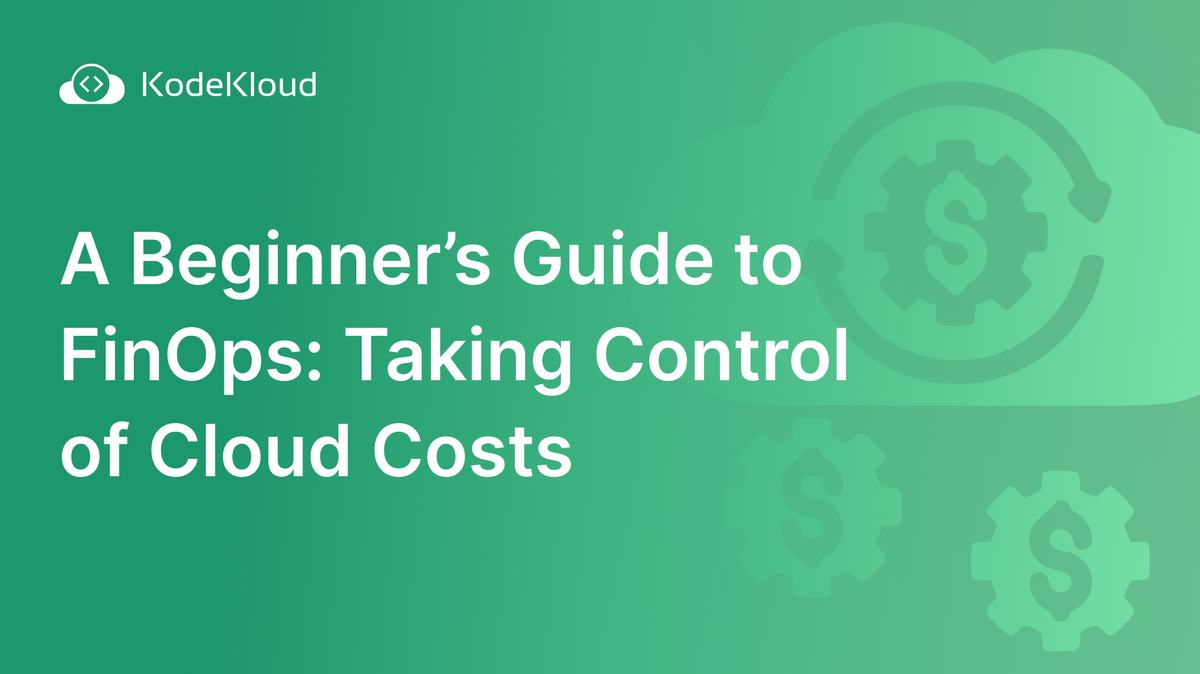
Additionally, moving data between clouds can incur network egress fees that are easy to overlook. Resource optimization – rightsizing instances, eliminating duplicates, and leveraging reserved or spot instances appropriately – becomes more challenging when done across clouds. Without a proper cost management strategy, the flexibility of multi-cloud can lead to budget surprises. Senior professionals adopting multi-cloud must plan for cost governance, possibly by using multi-cloud cost management tools and setting policies to prevent overspending.
In summary, achieving cost benefits in multi-cloud requires discipline and real-time visibility into usage on all platforms.
Key Tools and Platforms for Multi-Cloud Management
Successfully managing a multi-cloud environment calls for the right set of tools and platforms. Advanced practitioners rely on various technologies to simplify orchestration, maintain security, and gain visibility across all cloud assets. Here are some key tools and categories that enable effective multi-cloud management:
🔹 Cloud Management & Orchestration
To tame the complexity of multiple clouds, organizations use cloud-agnostic management platforms and Infrastructure as Code (IaC) tools. Solutions like HashiCorp Terraform, Pulumi, or configuration managers (Chef, Puppet, Ansible) allow you to define and provision infrastructure across AWS, Azure, Google Cloud, and others in a consistent way.
By describing infrastructure in code templates, these tools provide a single automation framework to deploy resources on any cloud. Container orchestration platforms like Kubernetes also play a huge role in multi-cloud strategies. Kubernetes abstracts the underlying servers, so you can run clusters spanning multiple clouds or easily migrate containerized workloads between providers. In fact, many organizations use Kubernetes as a universal platform to ensure their applications are portable across cloud boundaries.
Additionally, cloud providers themselves offer multi-cloud management solutions – for example, Google Anthos and Microsoft Azure Arc enable a unified control plane to manage workloads on-premises and across different public clouds. Using such platforms, businesses can simplify interoperability between clouds, deploying and scaling applications without having to manually configure each environment. The right orchestration tools essentially act as a translation layer, so teams can manage a heterogeneous cloud landscape through one pane of glass.
🔹 Security Solutions
Securing a multi-cloud environment requires specialized tools that provide consistent protection and compliance monitoring across platforms. Identity and access management (IAM) must be federated – many enterprises integrate their directory services or use third-party SSO (Single Sign-On) solutions to manage user access uniformly across clouds. For example, using SAML/OAuth federation or services like Okta can ensure one identity policy for all environments.
Cloud Security Posture Management (CSPM) tools are also crucial; these continuously scan cloud configurations for misconfigurations or compliance violations across AWS, Azure, GCP, etc. Solutions like Palo Alto Prisma Cloud, Check Point Dome9, or open-source Cloud Custodian help enforce security best practices in a multi-cloud context.
Network security must be extended across cloud boundaries as well – implementing zero-trust network architectures and using cloud-agnostic firewalls or micro-segmentation solutions can secure traffic between components on different providers. Encryption of data in transit and at rest on every platform is another must-do.
Additionally, centralized logging and SIEM (Security Information and Event Management) systems give security teams a unified view of incidents and alerts from all clouds. By leveraging these security tools and frameworks, organizations can maintain strong security and compliance even as they distribute workloads over multiple services. The goal is to avoid the scenario where each cloud is a separate silo of security – instead, build an integrated security program that covers the entire multi-cloud footprint.
🔹 Monitoring & Automation
Visibility and automation are the linchpins of multi-cloud operations. It’s vital to have centralized monitoring, logging, and alerting that aggregate data from all your cloud platforms.
Teams commonly use vendor-neutral monitoring services like Datadog, Dynatrace, or New Relic, which support multi-cloud environments and can track metrics and performance for resources on any provider.
Open-source tools like Prometheus (for metrics) and ELK/Opensearch Stack (for logs) can also be configured to collect data from multiple clouds into one dashboard. These tools ensure you can detect issues anywhere in your stack without having to check each cloud’s native monitoring separately.
Along with monitoring, automation is key to managing at scale – this includes automated infrastructure provisioning, CI/CD pipelines, and self-healing mechanisms. For instance, using Terraform or CI/CD tools, you might automatically deploy an application to both AWS and Azure, run tests, and promote updates in tandem. Automation can also handle failover: if a monitoring alert detects a failure in one cloud, scripts or orchestration can trigger a shift of traffic to another cloud. Incident response can be automated as well – integrating cloud alerts with tools like PagerDuty or custom Lambdas/functions that execute remediation steps. The use of AIOps and machine learning is an emerging trend to optimize multi-cloud operations (e.g., predictive scaling, anomaly detection across clouds).
In summary, a suite of robust monitoring tools combined with smart automation enables senior engineers to efficiently manage multi-cloud complexity. These tools minimize the manual effort and reduce the risk of human error when overseeing multiple dynamic environments.
How KodeKloud Helps Professionals Master Multi-Cloud
Embracing a multi-cloud strategy requires not only organizational change but also skilled professionals who understand how to design, deploy, and manage systems across various cloud platforms. This is where upskilling and continuous learning become critical.
KodeKloud, a leading DevOps and cloud training platform, provides the resources and environment for professionals to build multi-cloud mastery.

Here’s how KodeKloud can help senior IT folks and cloud engineers accelerate their multi-cloud learning:
🎯 Comprehensive Multi-Cloud Curriculum
KodeKloud offers an extensive library of courses covering all major cloud providers and cloud-native technologies. Learners can follow dedicated tracks for AWS, Microsoft Azure, and Google Cloud Platform – each track includes multiple courses from fundamentals to advanced services, ensuring you gain deep expertise in that provider’s ecosystem.



In addition, KodeKloud’s catalog includes courses on Docker, Kubernetes, Infrastructure as Code (Terraform, Ansible), and other tools that are essential for multi-cloud competence.

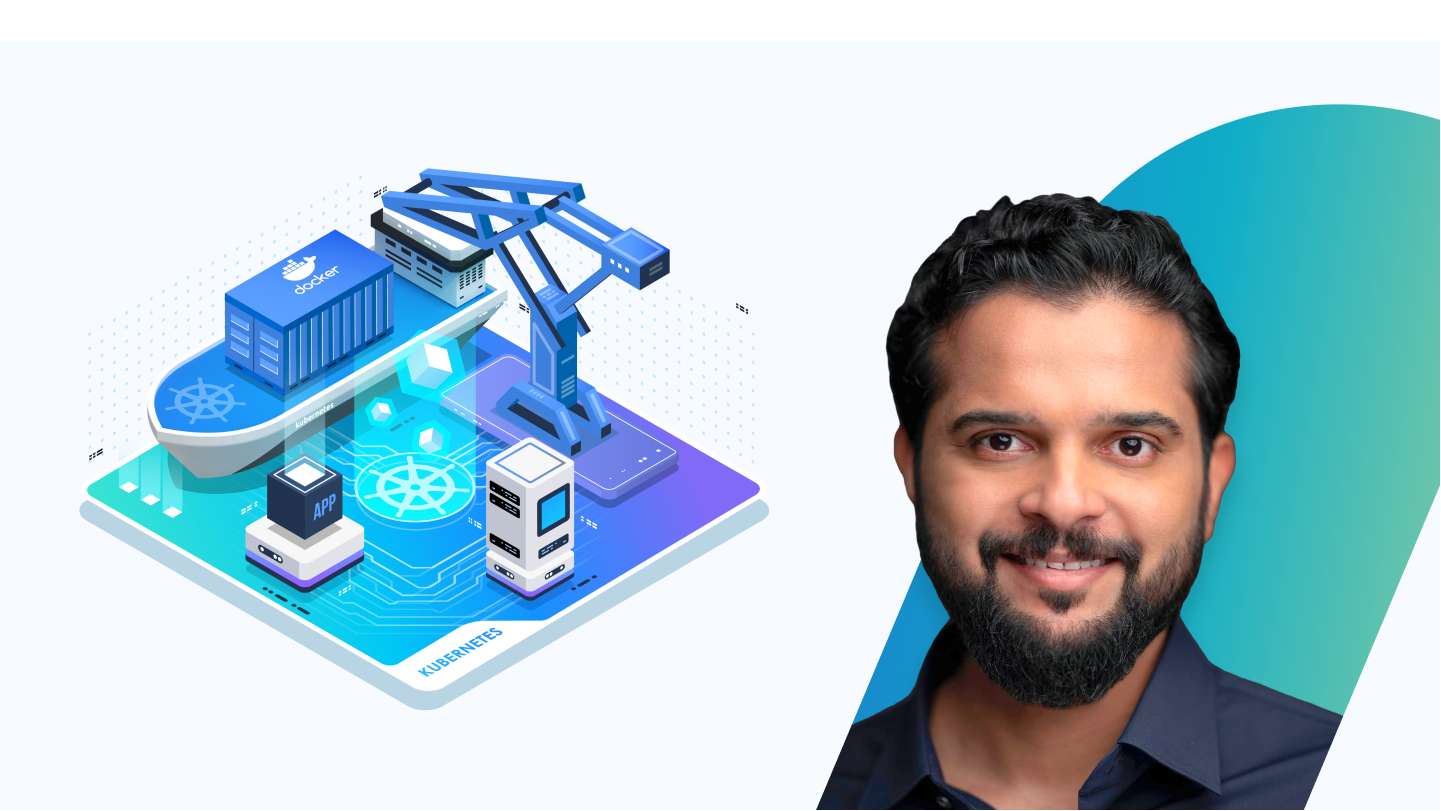

This breadth of content means you can build a well-rounded skill set under one platform. Whether you need to architect an AWS solution, deploy Kubernetes across clouds, or automate infrastructure with Terraform, there’s a relevant course or learning path available. By engaging with multiple cloud tracks, professionals get a holistic understanding of cloud computing – exactly what’s needed to confidently operate in a multi-cloud world.
🎯 Hands-On Labs and Real-World Scenarios
One of KodeKloud’s core strengths is its emphasis on learning by doing. The platform provides browser-based hands-on labs and interactive scenarios that replicate real cloud environments.

In fact, there are over 1,000+ hands-on labs and real-world scenarios available for students to practice on. This is invaluable for mastering multi-cloud: you can experiment with AWS and Azure consoles side by side, configure multi-cloud networks, or deploy a Kubernetes cluster across two cloud providers – all in a safe, guided environment.
These labs go beyond simple tutorials; they present you with challenges and tasks akin to what you’d face on the job, such as configuring load balancing between clouds or setting up cross-cloud monitoring. By working through practical exercises, you not only reinforce your knowledge but also gain the confidence to apply skills in production.
Senior professionals often have theoretical knowledge – KodeKloud’s labs ensure you can translate that into hands-on capability with each cloud platform. The real-world scenarios also expose you to best practices and troubleshooting techniques, making you better prepared to handle multi-cloud projects in your organization.
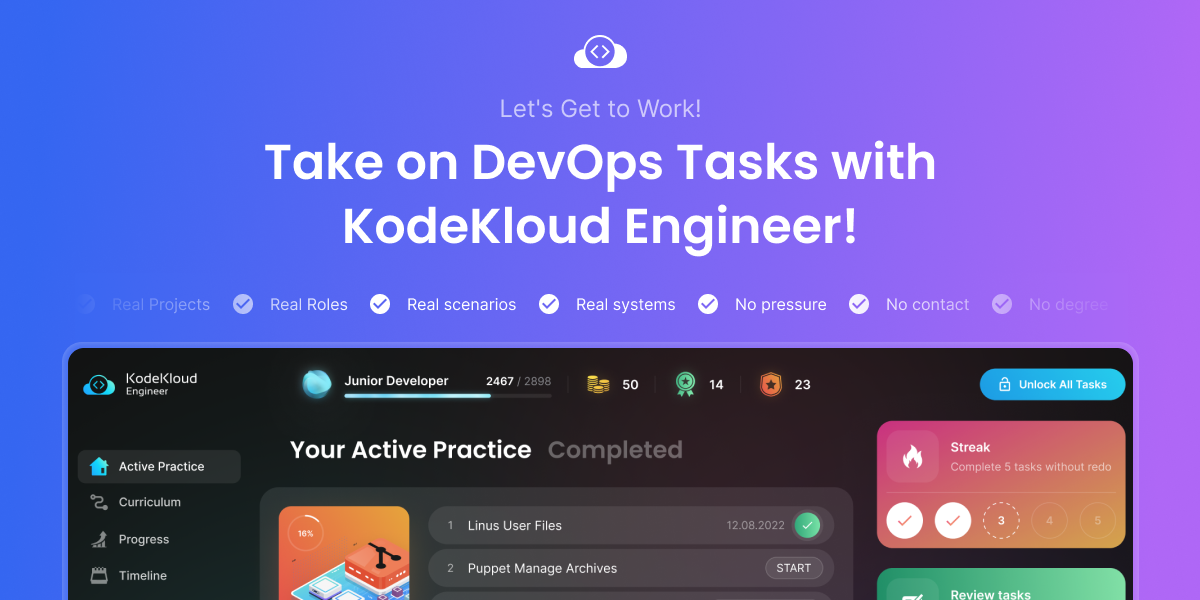
🎯 Certification-Focused Training and Career Growth
KodeKloud’s courses are designed to align with industry-recognized certifications and real job requirements. For those pursuing cloud certifications (a great way to validate multi-cloud skills), KodeKloud offers prep courses for exams like AWS Solutions Architect, Azure Administrator, Google Cloud Engineer, and Kubernetes certifications (CKA, CKAD, CKS).




These courses cover the exam objectives in depth and often include mock exams or quiz questions to test your readiness. Earning such certifications across multiple providers can demonstrate your multi-cloud expertise to employers. KodeKloud helps in this journey by breaking down complex topics into digestible lessons, supplemented by the aforementioned labs to cement understanding.
Beyond certifications, KodeKloud’s community and mentorship can support your career growth. You’ll join a community of over a million learners and professionals, where you can exchange insights and get help on challenges.
🔗 Join the KodeKloud Community – Connect with others, ask questions, and learn from experts!
Join NowThe platform’s focus on up-to-date content also means you are learning the latest cloud features and best practices, keeping your knowledge current in a fast-evolving field. By leveraging KodeKloud’s resources, senior professionals can fill any gaps in their multi-cloud skillset, gain practical experience, and earn credentials that boost their professional credibility.
In summary, KodeKloud acts as a one-stop training ground for mastering multi-cloud. Its blend of theory, practical labs, and certification-oriented modules equips you with both the technical know-how and the confidence to lead multi-cloud initiatives. Whether you’re an architect designing a cloud-agnostic system or an ops engineer automating deployments on hybrid clouds, KodeKloud’s training ensures you’re well-prepared.
Start Today
The future of cloud computing is undeniably multi-cloud. As an advanced professional, investing time in mastering multi-cloud strategies will pay dividends for both your organization and your career. Now is the time to elevate your skills and stay ahead of the curve. Don’t let your expertise plateau on a single platform – seize the opportunity to become proficient across AWS, Azure, Google Cloud, and the ecosystem of tools that glue them together.
KodeKloud’s expert-crafted courses and hands-on labs are the perfect pathway to gain this expertise. We encourage you to enroll in KodeKloud’s multi-cloud training programs and start expanding your cloud mastery today.

By upskilling in multi-cloud, you’ll be able to design more resilient architectures, drive cost efficiencies, and lead your team through the complexities of modern cloud deployments with confidence.
Empower yourself with the knowledge to leverage multi-cloud architecture to its fullest potential. Whether your goal is to avoid vendor lock-in, improve your system’s reliability, or implement a robust cloud strategy for your business, the right training will make all the difference. Take the next step in your professional development – join KodeKloud, and become a leader in the multi-cloud era. Your journey to multi-cloud mastery begins now. Prepare to unlock new opportunities, drive innovation, and future-proof your career in the dynamic world of cloud computing. Enroll today and transform your cloud skillset from single-cloud expertise to multi-cloud excellence!




















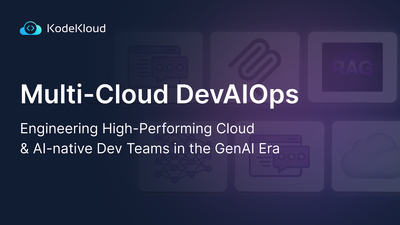


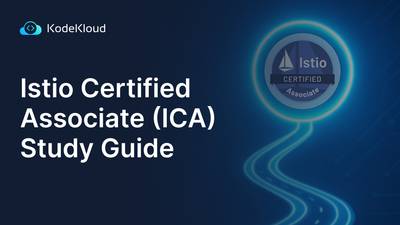



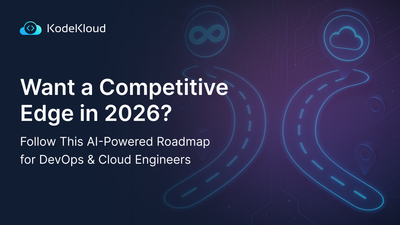
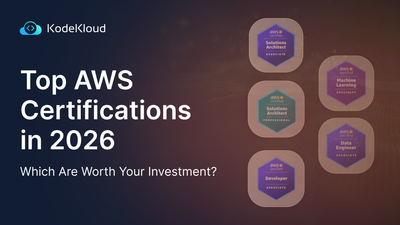
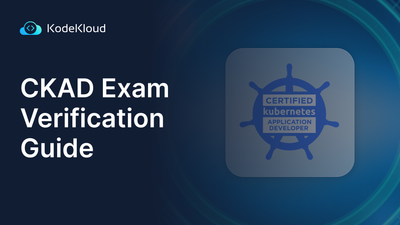


Discussion